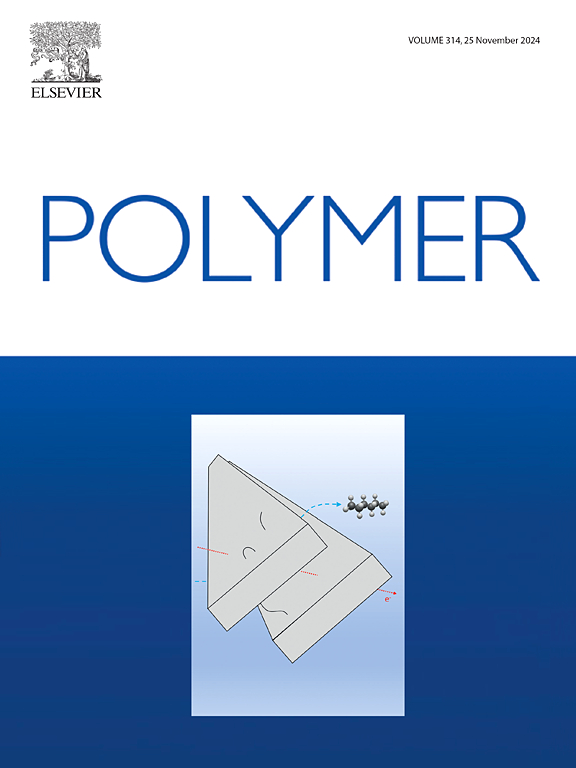Vat photopolymerization of semicrystalline polymers: Effects of crosslinking on crystallinity
IF 4.1
2区 化学
Q2 POLYMER SCIENCE
引用次数: 0
Abstract
In vat photopolymerization (VP), a crosslinked polymer network can enhance the dimensional stability and modulus of printed parts, but semicrystalline materials have not been extensively studied in VP. This work explores a semicrystalline polymer system suitable for VP, consisting of the monomers 1,6-hexanedithiol (HDT) and diallyl terephthalate (DAT), which was crosslinked using triallyloxy-1,3,5-triazine (TAT). While crosslinking improves certain mechanical properties, it can also restrict the formation of crystalline domains, thereby affecting material performance. Additionally, crosslinking can slow crystallization kinetics by influencing chain mobility. Therefore, to gain insight into the crystallization and recrystallization behavior of the HDT-DAT polymer, networks crosslinked with 0, 2, 5, 10, and 20 mol % of TAT in bulk form and printed using VP were compared. Differential scanning calorimetry (DSC) was employed to assess the crystalline and recrystallization behaviors, and X-ray diffraction was used to analyze samples with 20 mol % of crosslinker. It was found that at crosslinker concentrations of 5 mol % or higher, longer recrystallization times (over 20 h) are required to reestablish ordered crystalline regions in bulk polymerized films. In contrast, 3D printed specimens with similar compositions exhibited significantly shorter recrystallization times during annealing at room temperature, which can be attributed to their lower degree of crosslinking as evidenced by the lower gel fraction in the 3D printed samples.


求助全文
约1分钟内获得全文
求助全文
来源期刊

Polymer
化学-高分子科学
CiteScore
7.90
自引率
8.70%
发文量
959
审稿时长
32 days
期刊介绍:
Polymer is an interdisciplinary journal dedicated to publishing innovative and significant advances in Polymer Physics, Chemistry and Technology. We welcome submissions on polymer hybrids, nanocomposites, characterisation and self-assembly. Polymer also publishes work on the technological application of polymers in energy and optoelectronics.
The main scope is covered but not limited to the following core areas:
Polymer Materials
Nanocomposites and hybrid nanomaterials
Polymer blends, films, fibres, networks and porous materials
Physical Characterization
Characterisation, modelling and simulation* of molecular and materials properties in bulk, solution, and thin films
Polymer Engineering
Advanced multiscale processing methods
Polymer Synthesis, Modification and Self-assembly
Including designer polymer architectures, mechanisms and kinetics, and supramolecular polymerization
Technological Applications
Polymers for energy generation and storage
Polymer membranes for separation technology
Polymers for opto- and microelectronics.
 求助内容:
求助内容: 应助结果提醒方式:
应助结果提醒方式:


